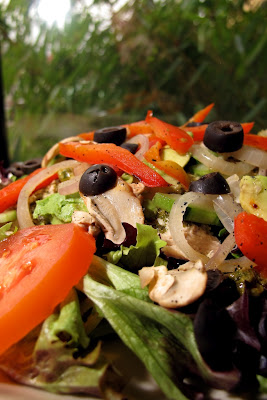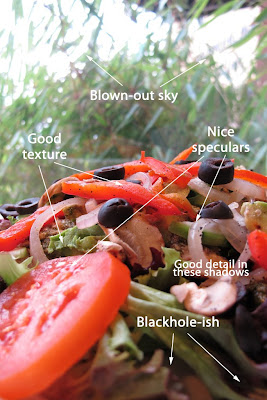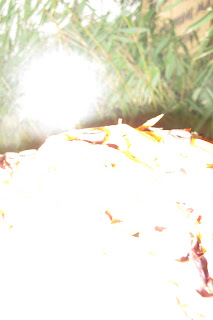Country Does Urban: Does Your Grass Bring Eggs to The Yard? 78
. chickens, edible landscape, eggs, free range, green, greenscapes, OREGON, Urban farming
These days the blogosphere seems to be all abuzz over Urban Farming. And why shouldn't we get excited about connecting with nature, beautifying our environments, turning a hard, grey expanse of concrete or chemically manicured, quilt of lawns into a eye pleasing edible greenscape? With the popularity of ever consuming technological devices, there is a growing digital divide - we as a society, are becoming less in-tune with our surroundings.
The growing force behind this country-does-urban lifestyle is the feeling of less connection with our food sources, a lack of use of our primal "hunting and gathering" skills and just an overall want to be the architects of our futures - using our hands and hearts, not apps and alerts.
Now true to everything, comes planning. You might awaken some morning and say "Eureka - I will be an urban farmer!", which is all well and good, but researching best practices and laws in your area are musts before attempting anything. In this instant gratification culture, it sometimes can be disappointing to take things slow and have a thorough plan. Depending on where you live, there are probably city ordinances specific to urban agriculture.
 |
| Rights Reserved. Click to view larger. |
In my city, here in Oregon, you are allowed 6 chickens in a brood, on your premises, within city limits. That means one rooster (male) and 5 laying hens (female) or just 6 hens.
Why am I talking chicken? My children, with me in tow, got to be urban homesteaders for a week, minding our neighbors brood, while they were out of the country. We learned the fine nuances of feeding, habits and behavior, of these odd descendants of dinosaurs.
You might be thinking - "Chickens - in my backyard? In earshot of my neighbors? How is that possible." I can reassure you, living just over the fence. That these creatures are less noisy than a barking dog. In fact, I have more trouble with barking dogs down the street than these birds.
Getting back to my first hand account, I will tell you that the weather smiled on us this week. We were blessed in the early mornings with bright beautiful rays of sunlight streaming across the yard, throwing looming shadows in striations. And the evenings were dewy and cool.
The first thing you must remember about taking care of chickens - wear old clothes and shoes that can be disinfected. If your chickens are "free range", this means an excess of chicken excrement on any surface the chicken can walk or perch upon, which in turn has bacteria, so you do not want your shoes tracking this into your house (those that garden know first hand that chicken manure is beneficial). So, after touching eggs, re-laying hay and feed - be sure to leave your shoes on your porch and wash your hands with soap and water. Toss your clothes in the wash.
Chickens, like children, are creatures of routine. They like to rise with the sun, and be told to go to bed. The first chore of the day is to open the hen house in the early morning hours. For precautions most doors are latched at night - to ward off predatory raccoon or possums. The hen house we watched over had no ladder or ramp, the chickens just jumped into, or out of the structure.
 |
| Rights Reserved. Click to view larger. |
As the chickens burst out of the hen house and down to freedom, now is the time to check for eggs, or the 2nd chore.
 |
| Rights Reserved. Click to view larger. |
This brood shared a nest, and would take turns laying among the 5 of them. These chickens all were of different origins, which made every egg a delightful color. Chickens, depending on age will lay 1-2 eggs on average daily.
It is important to note that fresh eggs must be washed, before refrigeration, to limit spread of bacteria. Likewise you must wash hands after this process of handling.
This brood was an Ameraucana, Black Australorp, Bantam Cochin, Golden Laced Wyandott, and a Black Sex Link. And let me tell you - they each had their own personalities and idiosyncrasies. And like most "packs" there was a leader, the alpha female (seen above), the Black Sex Link. She was queen chick in this coop! She would scold, fluff her feathers and get the brood all riled up.
 |
| Rights Reserved. Click to view larger. |
With the chickens and eggs evacuated from the hen house, and the pen now vacant, as the hens made their way out to the green, cool grass, for scratching and pecking, now the real maintenance could begin.
 |
| Rights Reserved. Click to view larger. |
 |
| Rights Reserved. Click to view larger. |
The fourth chore, as equally important, is fresh water. A bowl they can drink from throughout the day is especially important - dehydration can affect egg production.
Here the Ameraucana hen takes a drink of the fresh water (pic at left). This chicken resembled most it's dinosaur cousins. Such a pre-historic resemblance. The cool thing about these hen's eggs is they are naturally a blue to green tinge. If you hard boil these eggs, they have a blueish green appearance, as opposed to normal eggs. It is a trip!
 |
| Rights Reserved. Click to view larger. |
And the most important chore of all #5, feeding the brood. The hens are fed two types of food - the first type is a balanced organic feed, which has all types of ruff-age, protein and nutrients. You can either buy organic chicken feed or make your own. It is important these hens get enough protein, or it will lead to disease, leave them prone to parasites and poor egg production within the brood.
or make your own. It is important these hens get enough protein, or it will lead to disease, leave them prone to parasites and poor egg production within the brood.
The feed is measured out and scattered among the hay, to encourage the hen's natural behavior. Once the majority of the feed has been devoured, the 2nd type of feed can be scattered (in a limited amount) which is organic layer feed or chicken treat - this brood got bits of hard corn kernels.
or chicken treat - this brood got bits of hard corn kernels.
The most fun was observing these birds and their behavior. Did you realize chickens have a complex language? It is true. They have all different types of clucks, squawks and clicks. They will grumble when scratching for food, send a high pitched clucking when on alert and even cluck hello if you are a recognized care-taker.
The brood was allowed to explore the confines of the fenced yard well into dusk. Chickens are very inquisitive creatures. When darkness fell upon the yard, it was sleep time. The sixth and final chore was wrangling the hens toward the pen and into the hen house. This brood was rather intelligent - they were mostly ready and awaiting the signal for bedtime. All I needed to do was vocalize "bedtime" in a soothing way and the hens would jump up into the hen house one at a time. Of course, there were some stragglers, but there wasn't much resistance.
Here are the lovely eggs we collected:
 |
| Rights Reserved. Click to view larger. |
 |
| Rights Reserved. Click to view larger. |
 |
| Rights Reserved. Click to view larger. |
 |
| Rights Reserved. Click to view larger. |
Beauties aren't they!



.jpg)















